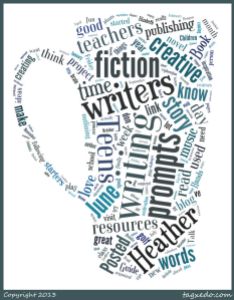
The summer solstice passed through here with cool winds and clouds and the furnace on. Hope your longest day offered more hints of summer than mine. And now that 2015 is half over, it’s a good time for me (and you) to stake stock of what’s been done and what is next on the writing agenda.
I’ve had a very good first half of the year, and currently have four draft books to edit and another book draft that is almost complete. I also published three other books two weeks ago. I’ve continued to learn about the self-publishing business, though I am currently resigned to the fact that I am a complete marketing failure. I live in hope that I will be able to change that when I am at the end of my current non-fiction, book-writing marathon and take the time (finally) to concentrate on book sales rather than book writing.
I want to tackle NaNoWriMo (National Novel Writing Month) in November and write fiction for a while, too. I’m hosting a series of NaNo workshops for local teen writers and am planning to join the fun and write along with them. Have you or your students attempted NaNoWriMo? Adult participants write 50,000 words in 30 days; younger writers can choose their own word count. The young writers’ program has amazing resources for writers of all ages.
One of the keys to success is to have a story thought out before going into the month of intense writing, though, I’m sure, lots of people just dive in. If you’re looking for a story idea to get you planning for NaNo, maybe one of July’s writing prompts will help. Have fun!
1. Here are some opening sentences for you to try:
- Bill looked up at the flag to check the wind.
- Helena reined her horse back to a walk. She needed time to think.
- “When was the last time you saw him?”
- He reached for the knife.
- If school sucked, then Mr. Wentwhistle’s English class was the largest Dyson in the building.
- I always liked the number 24.
- The old man leaned forward over the table.
2. Use one, some, or all of these words to spark a story or poem.
- Wheel, border, dark, wire, box, narrow
- Cover, arm, strand, leaf, tall, blue
3. See if you can come up with a story for one of these titles: Lone Pine, Rooftop Romance, Thieves Game, A Quiet Place, The Dragon’s Tower, The Stars Await, Big City Blahs, Red Sky at Night.
4. Here are some dialogue excerpts. Can you imagine the scenes that each is part of?
- I wish you didn’t have to leave.
- I must obey the master.
- Who are you waiting for?
- Who says I’m waiting …. Okay, I’m waiting.
- Did you see that car?
- The grey one?
- Yes. Did you see who was driving?
- No, it was going too fast.
- I’m not surprised. It just tried to run me down.
- Pass me that will you?
- What are you doing?
- I’ll let you know when I’m done.
5. How does your character react to frustration? (I’m writing this during my second consecutive hour of online assistance in an effort to get Photoshop to download and work on my computer. I admire the perseverance of the client services person, but I sooooo have other things I’d rather be doing right now! I finally got out my NEO and finished writing this blog post.) What does your character do when he or she has to wait for much longer than he or she thinks is appropriate, or when something small becomes a road block to a larger project that your character considers urgent? (p.s. I can now use Photoshop–Yay!)
6. What do sunsets make your character think about?
7. What makes your character laugh out loud?




